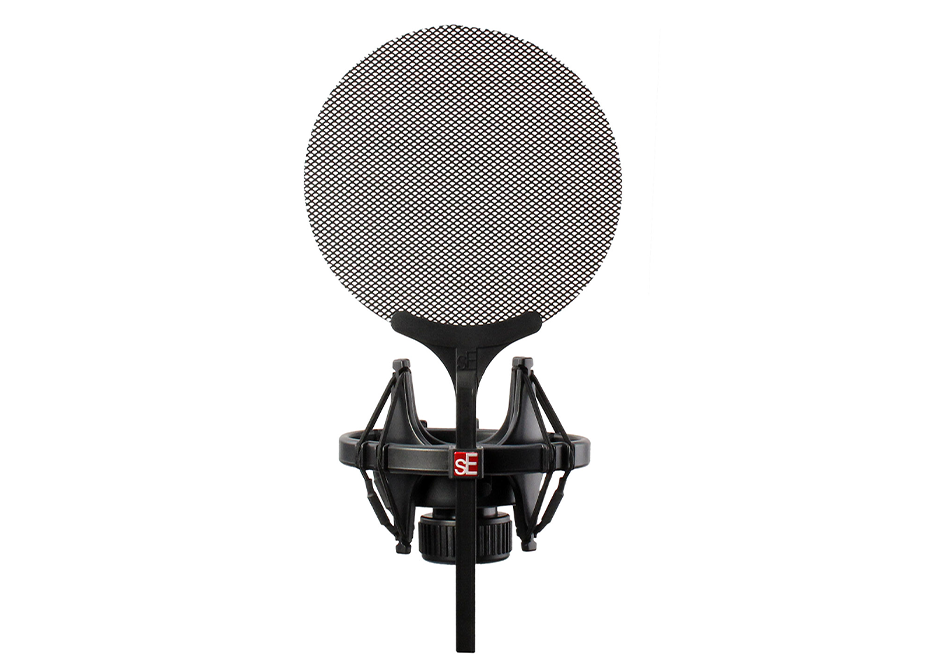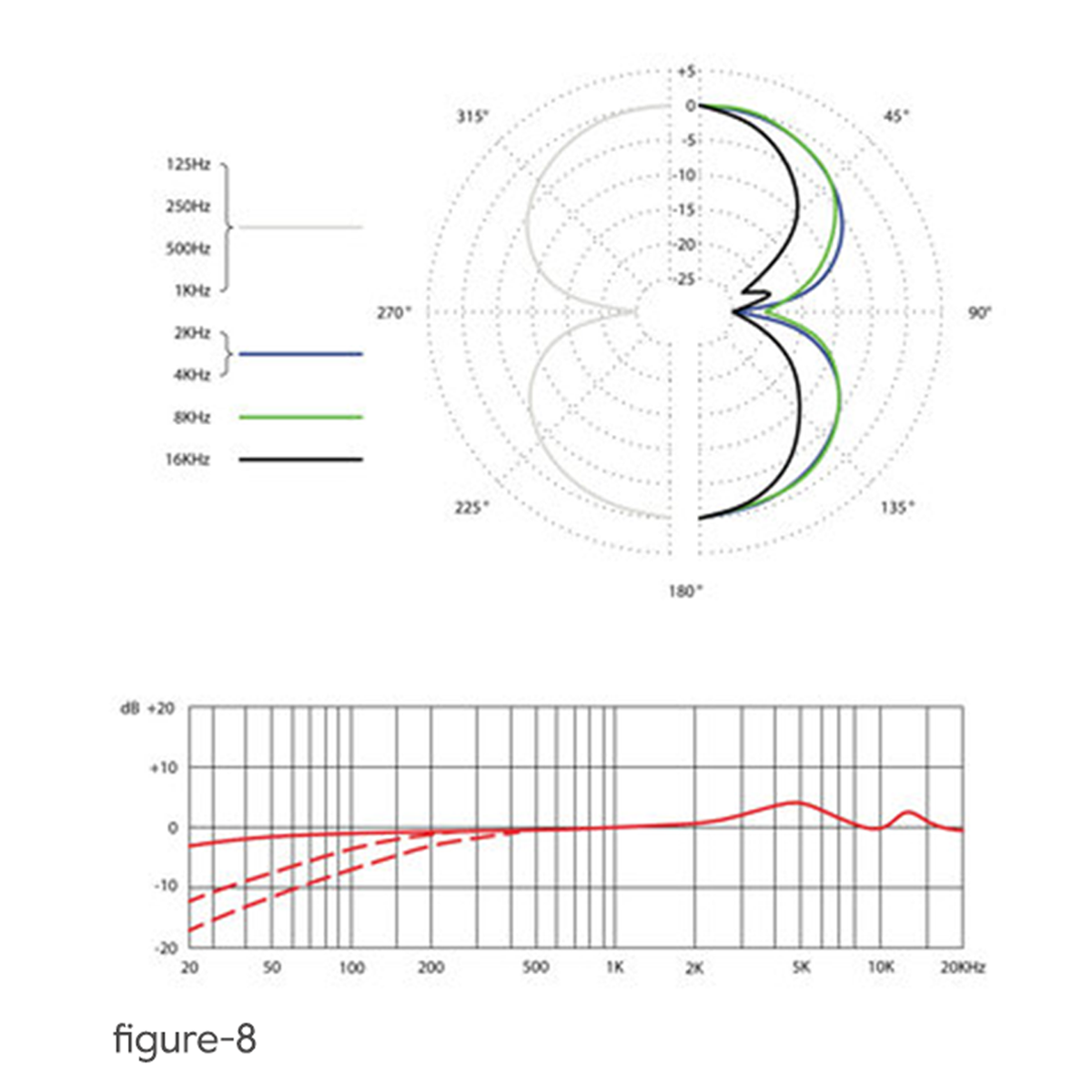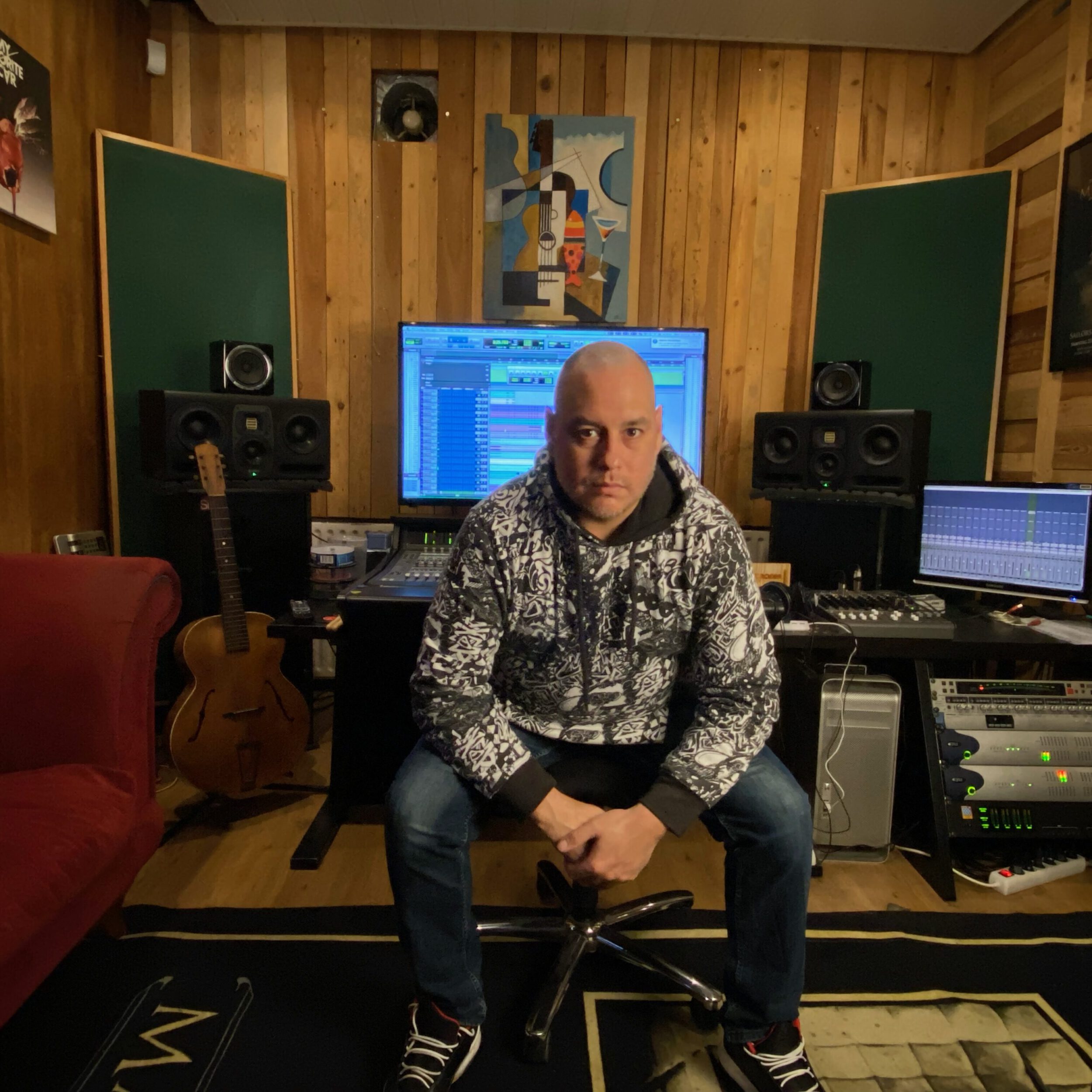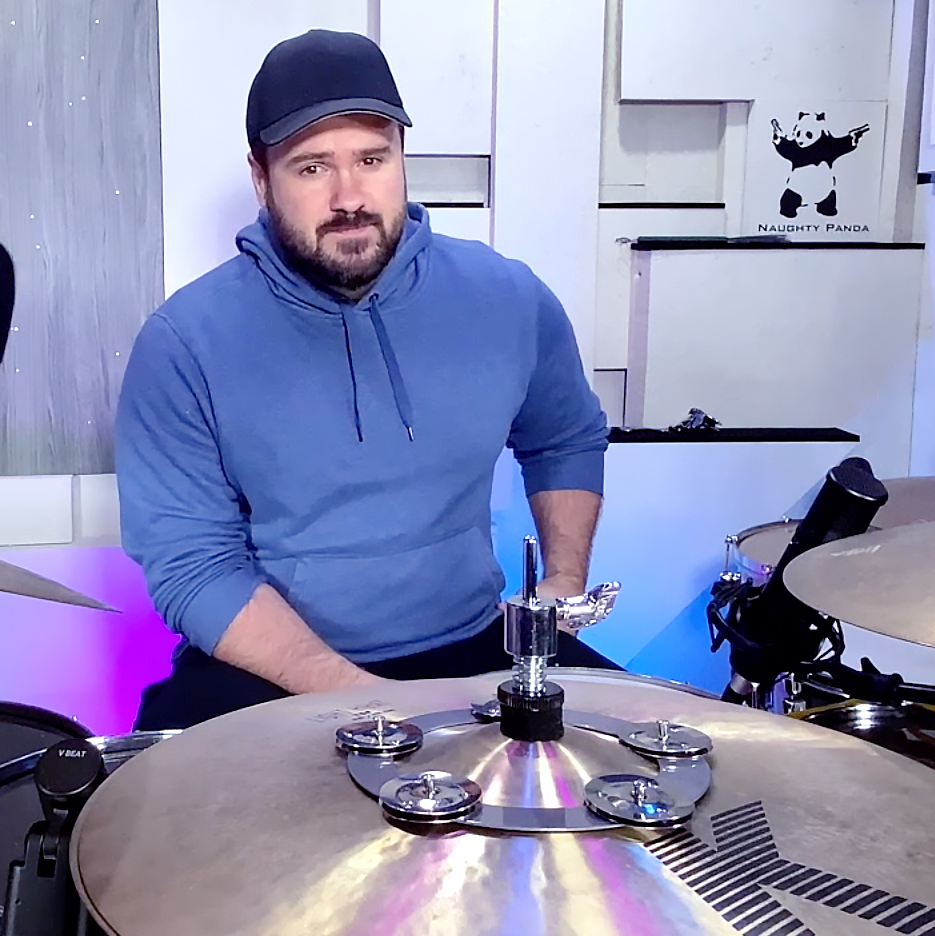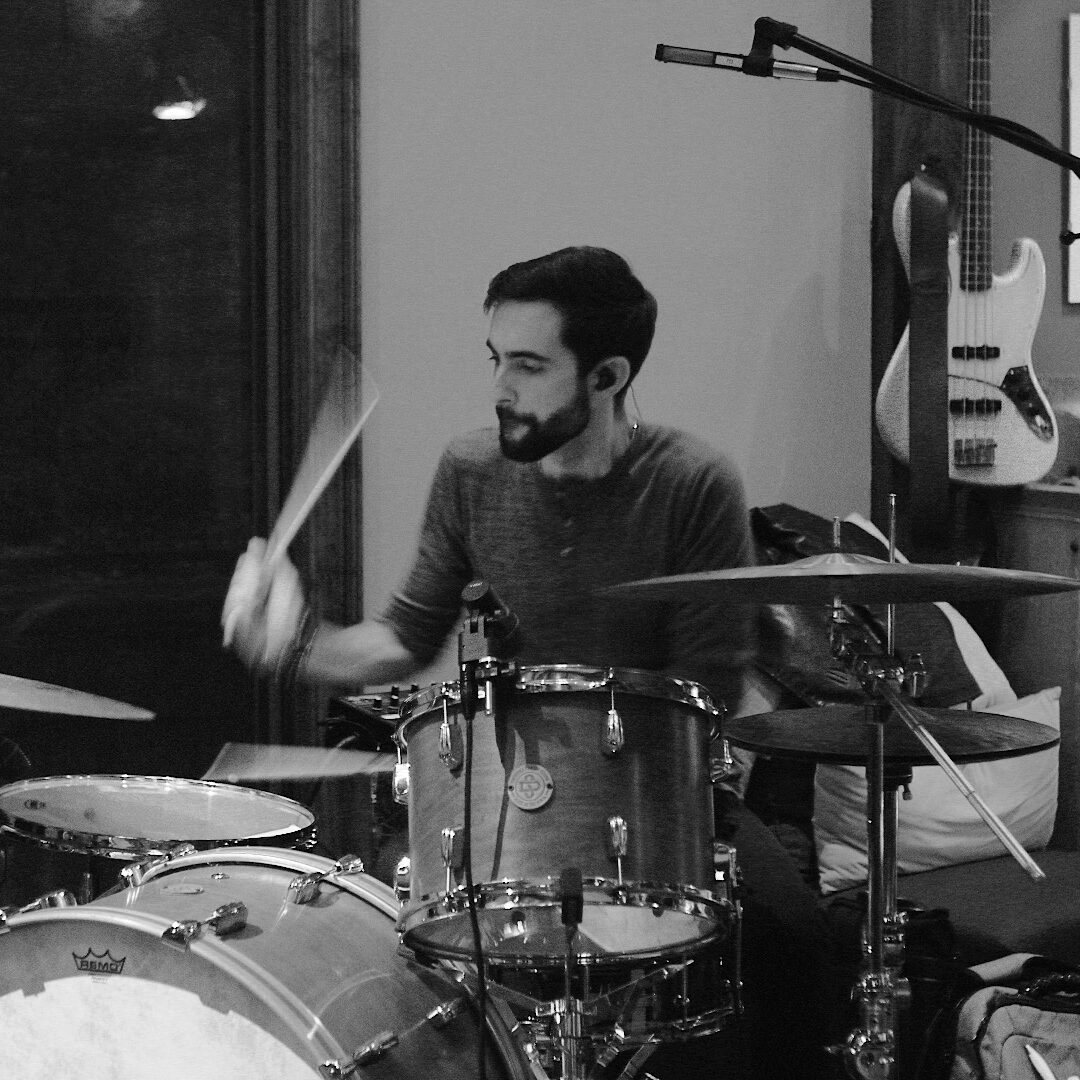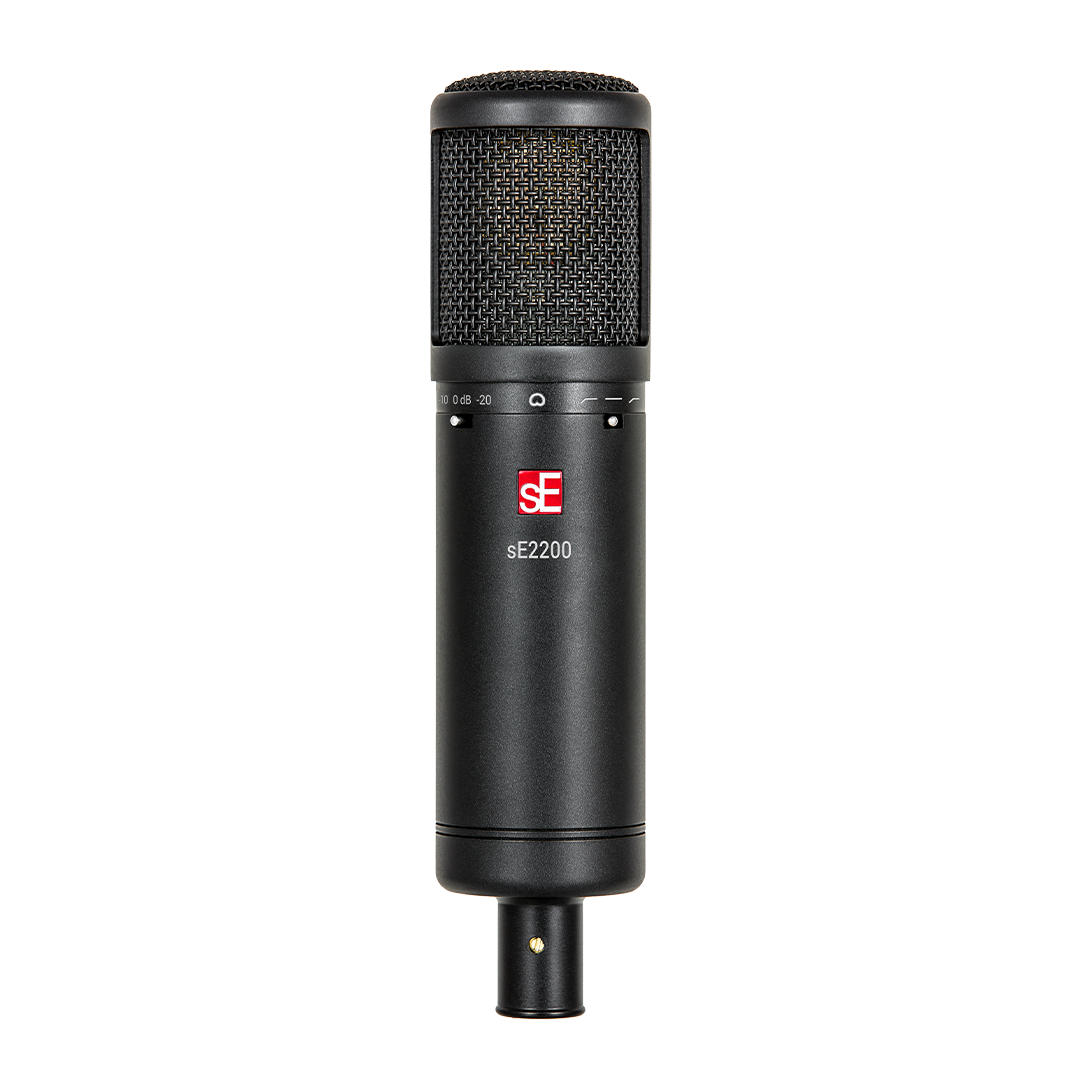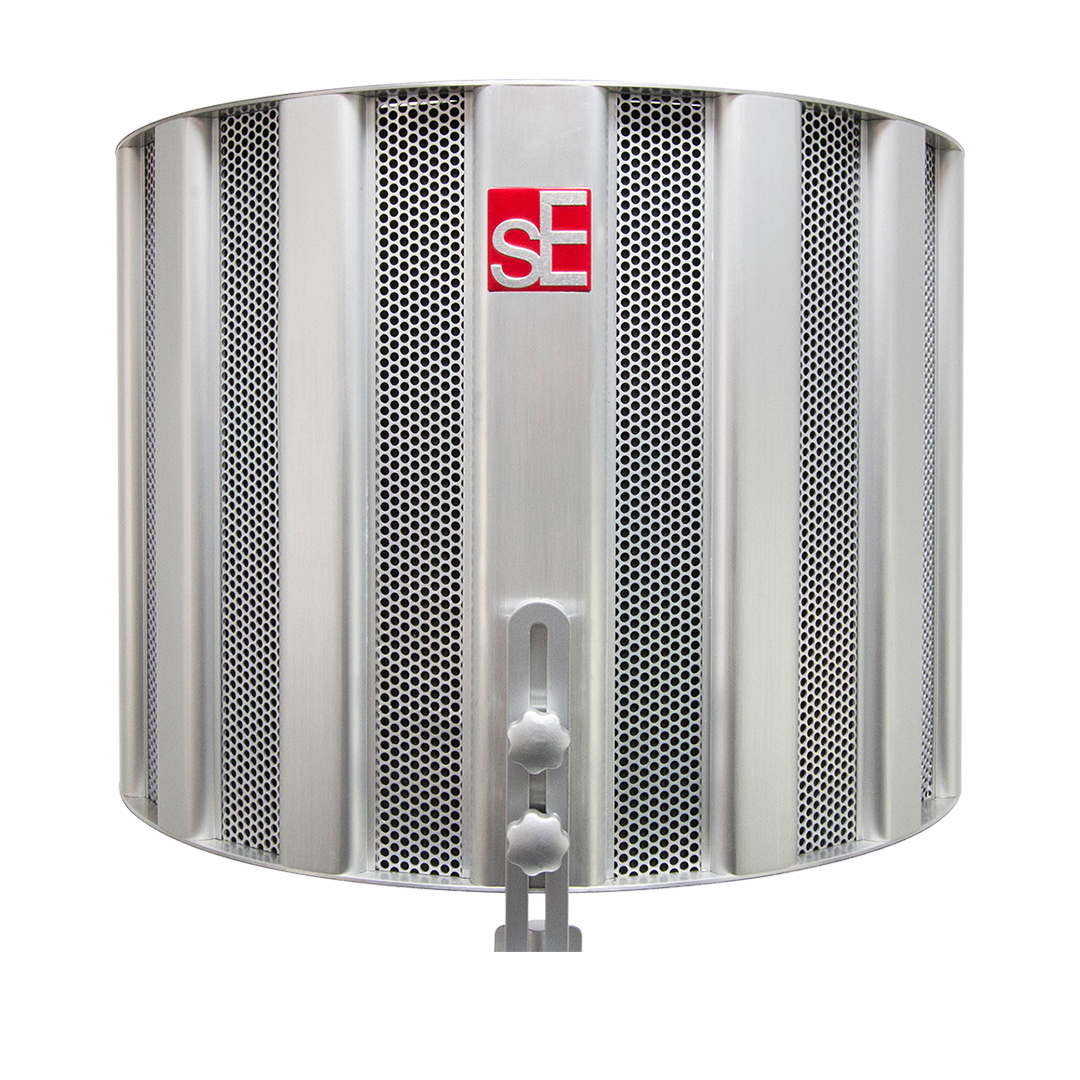sE2300
The versatile classic from sEThe sE2300 is the latest multi-pattern version of the award-winning 2200 condenser microphone that put sE Electronics on the map many years ago with its smooth, polished sound for vocals, voiceovers, and numerous instrumental applications. The cardioid version grew famous through use with world-class vocal artists like Amy Winehouse, and this multi-pattern version only increases its versatility, enhancing its usefulness for any instrument and reviving the spirit of the world’s most classic studio microphones.
Buy nowsE2300
The versatile classic from sEThe sE2300 is the latest multi-pattern version of the award-winning 2200 condenser microphone that put sE Electronics on the map many years ago with its smooth, polished sound for vocals, voiceovers, and numerous instrumental applications. The cardioid version grew famous through use with world-class vocal artists like Amy Winehouse, and this multi-pattern version only increases its versatility, enhancing its usefulness for any instrument and reviving the spirit of the world’s most classic studio microphones.
Recording studio, home studio, Vocals, Acoustic, Guitar, Electric Guitar Cab,
Orchestral + Strings, Piano, Woodwinds, Brass
Inside the sE2300
Inside the Iso Pack
Specs
Downloads
How should I store my microphone?
We generally recommend keeping your microphone in its case or original packaging when it is not in use for more than a few hours. If your studio is very clean and safe, it could be OK to leave out on its mic stand when not in use, but if a mic is out of its case, it could potentially be exposed to dust, smoke, moisture, or humidity – which can damage the sensitive parts of the mic – so we recommend avoiding those things at all cost.
What are the differences between your microphones’ polar patterns? How do I choose the most suitable type of polar pattern for my recording environment?
There are no real “right” or “wrong” answers to this question, as different patterns will just provide different types of sounds, and whatever best suits your particular song is usually the right answer! With that said:
- Cardioid – Generally best for recording vocals or other single sources, when you don’t want to hear much of the room sound around the source.
- Omni – This is good when you want a less focused, more “roomy” sound. Think distant drum mics in a great-sounding room.
- Figure-8 – Since this pattern lets the mic “hear” on both sides – front and back – and reject the sounds on either side, it’s handy if you want to record two sources at once from a point in between them, without hearing what’s off to the sides.
- Hypercardioid / Supercardioid – More directional than Cardioid, this is good for spot mics, when you want the sound to be very focused.
My guitar amplifier / drum / horn is VERY loud, and I am concerned about the risk of damage due to loud noise.
For the most part, sE mics can tolerate extremely high SPLs (typically over 135dB) and will be fine in front of even the loudest sources – yes, even our ribbon mics. If in doubt, you can check the specifications on the individual product page.
Which sE mic is best for recording vocals / drums / guitars / etc.?
Check out our Find Your Mic page to find the perfect mic for your application.
How do I clean the microphone from spillage and dirt?
If your microphone has come in contact with dirt or another removable substance, we recommend cleaning it with a very soft, slightly damp cotton cloth. Do not open the microphone up to clean the inside, and make sure you NEVER touch the capsule itself. Cleaning a capsule should only be done by highly trained professionals in a “clean room” environment. If you suspect your capsule needs to be cleaned, please contact [email protected] so we can recommend an authorized local technician.
